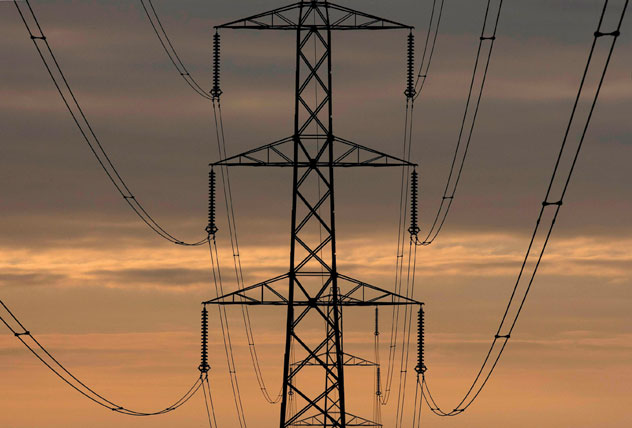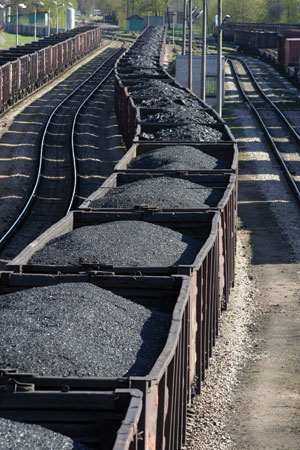SUBCONTINENT:
Major Hurdles: India's Power Plans Stumble
There are signs that India grand power sector plans could derail unless urgent action is taken to redress the problems ranging from low tariffs, farmers’ opposition to land acquisition, stiff environment regulations, insufficient supply of domestic coal and rise in price of imported coal, writes Siddharth Srivastava.

In a clear warning that all is not right, private major Tata Group chairman Ratan Tata, known for his plain speaking ways, recently said that Tata Power is looking for growth opportunities overseas due to the difficulties being faced in the domestic arena. “The government needs to look at the power sector with a tremendous sense of priority, more so if it wants to meet its plans and growth targets,” Tata said.
India is targeting 100,000 MW of additional electricity capacity in the period 2012-2017 and needs investments of over U.S. $400 billion in the power sector to tide over acute electricity deficits. India’s present power capacity is 170,000 MW.
India’s coal import dependence, meanwhile, is projected to more than double in next five years from 125 million tons at present, as per official estimates. This is due to the inability of state monopoly Coal India Limited to plug rising demand supply gap due to multiple factors that range from strict green laws to technology obsolescence.
In a recent assessment the Anglo-Australian mining firm Rio Tinto said that India’s coal imports could touch about 200 million tons over next few years.
 (Right): Coal being carried from the mines on an Indian goods train. (Right): Coal being carried from the mines on an Indian goods train.
Growing Pessimism. Tata’s concerns have been echoed by other power firms in the recent past. Another major, the Anil Ambani Group firm Reliance Power has halted work on its 4,000 MW Krishnapatnam ultra-mega power project (UMPP) due to coal policy changes in Indonesia that will impact import price.
The company CEO J.P. Chalasani said, “the issue is that we don’t have sufficient (domestic) coal today and we won’t have it tomorrow. So we will have to supplement it with imported coal which is going to be more expensive.”
R-Power’s proposed 4,000 MW power project at Shahpur, Raigad district in Maharashtra is also stuck because of the inability of the state government to complete land acquisition within the agreed time frame.
Tata Power, meanwhile, has sought a review of electricity tariff prices from the government. The company’s Mundra UMPP in Gujarat stands adversely impacted due to Indonesia.
Macro Picture. Indications are that Indian power firms have already slowed down implementation processes due to adverse factors. A recent survey by the Association of Power Producers and Mercados Energy Markets said thermal power capacity of 38,748 MW stands affected due to non-availability of coal.
The survey shows that about 21,300 MW Capacity including projects by majors such as Lanco and Adani are operating at less capacity or idle due to insufficient coal or clearance to mine.
A further 14,200 MW capacity that relies on imported coal has been impacted as supplier countries such as Indonesia have raised the price of the critical fuel. Essar’s Salaya project, Tata Power’s Mundra and Reliance Power’s Krishnapatnam have been negatively affected, with projected returns to investment dipping significantly.
All of this means that default risk of borrowed funds has also gone up affecting future disbursement of the massive Rs. 1,350 billion that the banking sector has committed to India’s electricity generation.
Investment Push. Despite the challenges, power firms continue to hope that they will still make profits, given India’s acute power deficit, in the face of an economy growing close to 8%.
For example, Jindal Power has announced that it will be looking to acquire thermal plants already under implementation in India to raise its thermal power generation capacity faster. Meanwhile, Reliance Power has sought shareholders approval for sale of up to 25% shares to institutional investors for funding projects.
Indeed, there is reason to believe that some of the issues that plague India’s power sector could sort themselves. Indian power firms continue to look for and purchase mining assets overseas in Indonesia, Australia, Africa, America, Russia and the Asia Pacific region, to build backward raw material linkages that will ensure stable prices and supplies.
There is generally a gestation period given ongoing contractual obligations, need to further develop the mines and set up adequate infrastructure before the coal arrives at Indian ports.
New Delhi is also working on enacting a new Land Acquisition Bill that makes the process friendly towards farmers and landowners. A period of flexibility in green laws could also ensue with the exit of environment minister Jairam Ramesh seen as “inflexible” by industry.
All of these aspects will need to fall in place for the Indian economy to sustain its growth closely linked to the way the power sector performs.
|